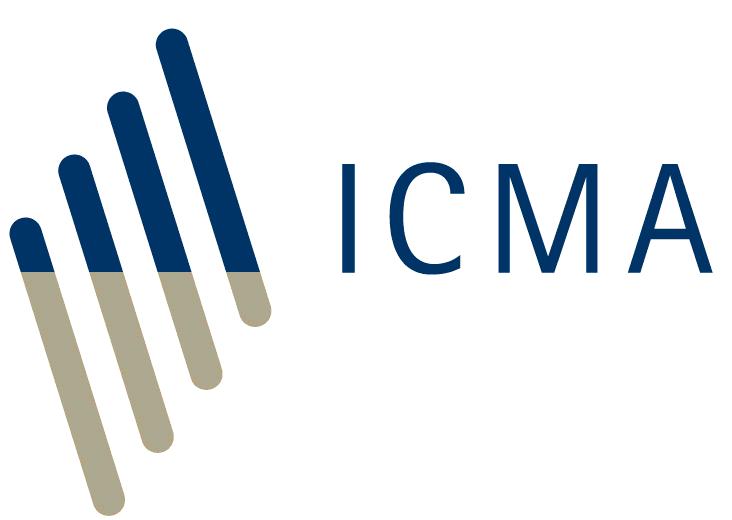Online
|
Online
|
|
|
|
|
This introductory level programme has been designed for anyone seeking a greater understanding of the buyside – or the investor base - of the financial markets, with a particular focus on fixed income.
The syllabus offers an overview of the financial marketplace including who the different buyside investors are and what are their motivations and investment strategies. The course also provides participants with a refresher on fixed income and the risks associated with that instrument in particular.
Video Modules
The series of 15 videos – each around 15-minutes in duration – are divided into eight sections covering topics like key stakeholders, their role in the buyside, risk, regulation, innovation and more. At the end of each video you’ll answer a series of concept-checking questions before moving on to the next one. You will have access to these videos for the duration of your course (six months).
Learning Outcomes
By the end of the programme delegates will be able to:
- Recognise an overview of the financial marketplace, key stakeholder and the various asset classes
- Understand the meanings of the terms “buyside” and “sell-side”
- Identify a fixed income instrument, including how it works and some of the key risks associated with investing in this instrument
- Identify key buyside investors, their roles and their motivations
- Recognise different investment strategies employed by buyside investors
- Identify a hedging strategy and how a hedging transaction might aid a buyside investor
- Identify the various regulations that ‘control’ the buyside
- Discuss how the buyside has responded to the growth in ESG and digitalization
Discover some relevant anecdotes and SLB case studies
Who should attend?
The programme is intended for people who are either new to working in the financial markets or who have limited experience and wish to develop a greater understanding of how the “buyside” – or the segment of the financial markets that buy securities - works, specifically in the context of debt.
Attendees should have basic quantitative skills but no prior study or work experience is required.
Assessment
The exam consists of 50 multiple choice questions of which candidates must answer a minimum of 30 questions correctly, with a score of 45 or more earning a distinction. You will have six months in which to study the material, book and complete an online, fully invigilated exam.
We use a third-party exam invigilation service called ProctorU to administer the exams on our assessed courses. We recommend you take a few minutes to watch this video before you take your exam, which provides information on what to expect on the day. You can also take a look at some further information here.
More information regarding your specific exam will be available in the Exam Orientation page on Moodle, the ICMA training platform.
Certification and Programme Recognition
ICMA is an FCA-approved qualifications provider, approved by the Securities & Futures Commission of Hong Kong as provider of Continuous Professional Training (CPT) and a member of the CPD® Certification Service.
The course is certified by ICMA and the ICMA Centre, Henley Business School, University of Reading.
ICMA recommends that 12 learning hours can be associated with this course, based on attended/undertaken hours of study required to successfully complete the learning outcomes.
A Certificate of Completion will be awarded to those who successfully pass the final exam of this course – see Assessment section for more details.
Please note that your course certificate of attendance or completion should be sufficient to satisfy any professional development requirements – if you require further evidence, please contact us at education@icmagroup.org.
Course Trainer
Yolanda Clatworthy
Section 1 - Overview
- The drivers of the financial markets
- Who are the players involved in financing corporates?
- Introducing the ‘buyside’ and the ‘sell side’ – what do these terms mean?
Section 2 – An overview of the Buyside assets
- Assets incl. ordinary shares, preferred stock, bonds and derivatives
- Asset classes and the potential risks and return
Section 3 – A focus on the fixed income market
- What are bonds and how do they work?
- How bonds are issued for the first time
- Buying and selling bonds and the role of debt research
- How bonds are repaid
- Investment risk
Section 4 – Who are the main buyside participants?
- Who are the buyside investors? Their rationale, priorities and motivations
- Important buyside players incl: Asset Managers, Insurance Companies, Pension Funds
- Buyside players – what are their strategies and objectives?
- Important buyside players incl: Sovereign Wealth Funds, Hedge Funds, Central Banks, Private banks & the Treasury, Retail investors/Mutual Funds, Family offices
Section 5 – The role of the buyside
- How do buyside investors generate funds?
- Mutual funds, ETFs and separate institutional accounts
- Investment strategies incl: Active management against a benchmark; Exchange Traded Funds /passive management, defining liability driven investing
- The role of bonds in different investment strategies:
- Sovereign bonds vs corporate bonds
- The impact of instruments such as inflation bonds, CDOs etc.
- Concepts of Leverage and Yield
- Performance generation & sources of investment performance
Section 6 - Risk
- Types of risk for fixed income investors
- Managing currency, interest rate and inflation risks incl: hedging
- Liquidity risk and market shocks
- An overview of credit risk
Section 7 – Regulation
- Key regulation that governs the buyside incl: Investor protection, Asset managers conduct, the role of asset managers contributing to financial stability, Prudential risk
Section 8 – Innovation in the Buyside
- ESG and sustainability
- Impact of digitalisation incl: Distributed ledger technology (DLT) trading and post trading processes, Crypto assets, digital operational resilience of organisations, regulation
Online Course
The Introduction to the Buyside is an online course – delegates who sign up to online courses will have access for 6 months to enable them to take advantage of the additional online resources, discussion boards and other functions of our new digital learning platform.
You will be given access to the course materials on the start date of the course, and will retain access for six months to keep working through the materials at your own pace.
Online course fees
Members: EUR 1,300 (VAT not applicable)
Non-members: EUR 1,900 VAT not applicable)
Please note:
- Payment for online courses must be received before the start of the course.
- All payments must be made in Euro.
Contact
Should you have any queries, please contact education@icmagroup.org.










